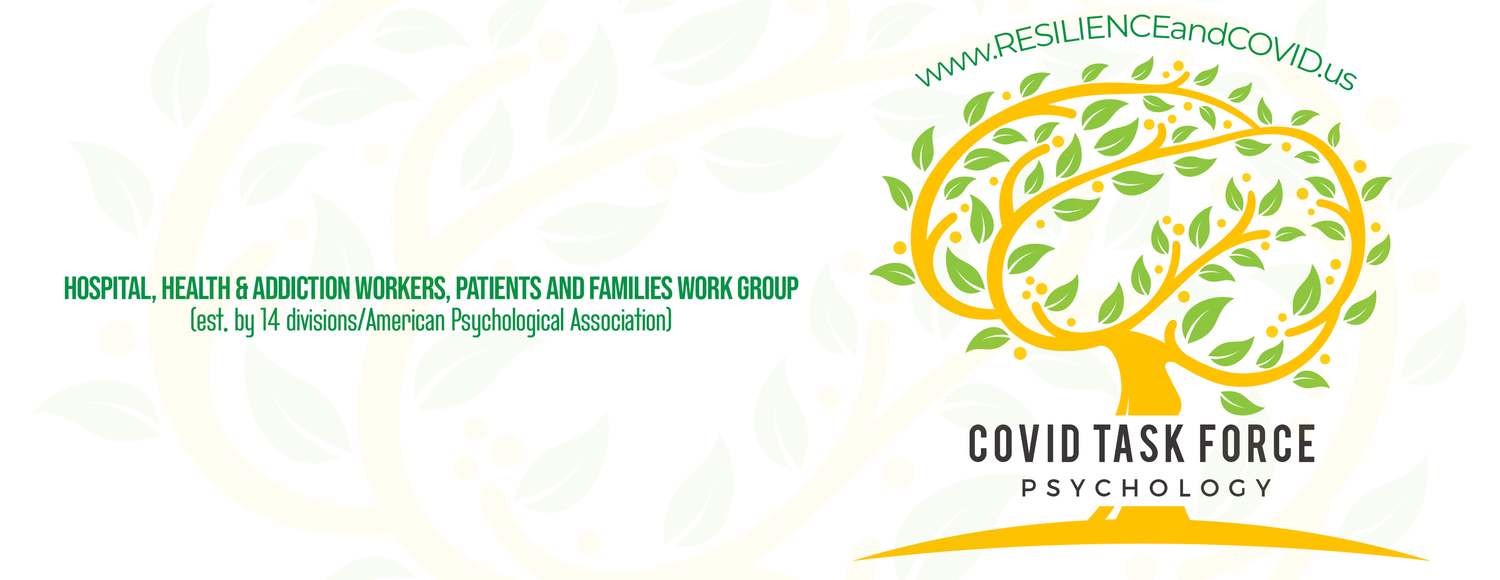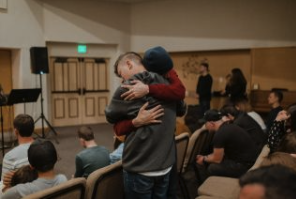What to Say When There Are No Words
Nine tips for creating effective communication and addressing polarization.
KEY POINTS
Mental health practitioners face challenges of helping people handle societal divisions since COVID-19.
Terror Management Theory provides a framework for understanding the deep impact of mortality awareness.
Trauma is a shared experience and community support is key to recovery.
By Elizabeth Malkin, MA, MSCP, and Robert M. Gordon, Psy.D.
Source: adrianna geo / Unsplash
Mental health professionals are confronting challenges in their clinical practice stemming from unprocessed grief and loss for themselves and their clients associated with COVID-19. These challenges are further compounded by heightened polarization and ongoing wars in Ukraine and Israel/Gaza that have eroded a sense of safety and security worldwide. Schneider (2013) identifies the polarized mind as one that fixates on a single viewpoint at the expense of other perspectives, which reduces emotional complexity and the flexibility to process grief and loss. In addition, belief systems that have emerged during the pandemic have caused unanticipated conflict and tensions between families, friends, co-workers, as well as between therapists and clients.
To better understand these interacting psychological dynamics, it is important to examine the psychological mechanisms underlying death anxiety and societal attitudes toward pain and suffering that contribute to the emotional reactivity that has been prevalent in discussions between friends, family, and on social platforms.
Terror Management Theory Applies Here
Regarding the context of the pandemic, Pyszczynski and colleagues (2021) provide a comprehensive model grounded in Terror Management Theory (TMT). TMT explains how our awareness of death impacts daily functioning. Awareness of death—which was heightened during COVID-19—can trigger an overwhelming sense of terror that individuals counteract by developing defensive, sophisticated psychological systems and cultural worldviews. These worldviews might take the form of more rigid, polarized belief systems.
Specifically, the formation of cultural worldviews effectively buffers against death anxiety. These worldviews offer a comprehensive set of beliefs, including rules and values for how one should live, answers to ultimate questions about life, and the promise of literal or symbolic immortality to those who live up to these standards (Pyszczynski et al., 2021).
Research shows that frequent reminders of COVID-related fears, including often-contradictory information on various social media platforms regarding safety measures and vaccine efficacy, increase commitment to and protection of one’s worldview (Pyszczynski et al., 2021). These factors can result in even greater polarized thinking as well as denial and projection of one’s fear, vulnerability, and helplessness, thus hindering one’s ability to accurately process complex information, grief, loss, and empathize with others.
Trauma Effects Are Important in Society
Trauma effects and the journey to recovery occur within the fabric of social and interpersonal interactions. While traditionally the focus in stress- and trauma-related disorders has been on the patient or individual, it is crucial to recognize that these disorders emerge within the context of relationships—among partners, families, friends, communities, and society as a whole (Maercker & Hecker, 2016).
The term “traumatized societies” captures the collective experience of a large social group that shares territory or cultural values, and that have experienced violence, war, or exposure to threatening events. This can also describe populations that have survived historical trauma as well as the intergenerational trauma that follows (Maercker & Hecker, 2016). To combat this, both the perception and availability of social support are pivotal in mitigating the impact of traumatic events on both individuals and groups. Effective social support creates a critical buffer against the development of post-traumatic stress responses (Kleber, 2019).
Societal Perspectives on Pain and Suffering
Cultural narratives around pain and suffering have evolved in such a way that we have developed a reluctance to acknowledging these aspects of the human experience. Remen (2000) and Buechler (2019) highlighted that this aversion has led to an indifference towards the suffering of others and a sense of shame about our own suffering. Our society tends to view illness and death as a failure (Kessler, 2019), which can prevent individuals from expressing their grief and sorrow. When pain and suffering are avoided, there is also a missed opportunity to display the humanness that connects us to loved ones and friends (Buechler, 2019).
The Impact of Polarization on Communicating With Others
The resistance to pain, suffering, and the emotional experience creates an unhealthy dichotomy within the individual and group context. The closed mindset of polarization increases the likelihood of being emotionally reactive, defensive, blame-focused, and judgmental in conversations (Rushton, 2018). Group polarization is the tendency of group members to arrive at a consensus that is a more extreme position than those of individual members (Jost et al., 2022). This psychological phenomenon has significant implications across societal domains, including politics (Jost et al., 2022).
In contrast, diverse opinions are a sign of a healthy democracy and effective discourse (Koudenburg & Kashima, 2022). Open-minded discussions are an effective strategy to alleviate tensions caused by polarization, fostering a more inclusive and empathetic environment.
9 Communication Tips to Adopt
In psychotherapy, unprocessed grief and loss can be addressed by:
Encouraging clients to view grief and sorrow as vital parts of identity and as an opportunity to expand themselves (Buechler, 2019).
Asking the client: “Looking ahead five years from now, how did you handle the traumatic experiences of the pandemic?” (Gordon et al., 2021). “What sustained you in dealing with your loss? “Where do you find your strength?” (Remen, 2000).
Encouraging clients to consider how courage and curiosity can help navigate the experience of grief and loss (Buechler, 2019).
With family and friends, strategies to deal with polarization and different perspectives include:
Entering these challenging conversations with an attitude of humility, respect, and openness.
Having these conversations at a time of readiness, rather than when boiling over with anger.
Trying to understand the circumstances in their life that may have led them to their perspective, beliefs, and opinions.
Focusing on deep listening and understanding rather than convincing the other to change their perspective (Schneider, 2013).
Paraphrasing what the other person is saying to ensure understanding.
Asking open-ended questions: “How did you come to believe that?”(Brooks, 2023).
The Power of Integrating Grief and Loss
It is important for mental health practitioners and society to adopt effective communication strategies to address communal traumas. By integrating grief and loss as vital parts of our identity, cultivating curiosity, and engaging in empathetic dialogue, we can mitigate some of the effects of polarization and promote collective healing. This is not only key for individual resilience, but also for reinforcing the societal bonds that shape our shared human experience.
References
Brooks, D. (2023). How to know a person: The art of seeing others deeply and being deeply seen. Random House.
Buechler, S. (2019). Psychoanalytic approaches to problems in living. Routledge.
Gordon, R. M., Dahan, J. F., Wolfson, J. B., Fults, E., Lee, Y. S. C., Smith-Wexler, L., Liberta, T. A., & McGiffin, J. N. (2021). Existential-Humanistic and relational psychotherapy during COVID-19 with patients with preexisting medical conditions. Journal of Humanistic Psychology, 61, 470-492 https://doi.org/10.1177/0022167820973890
Kessler, D. (2019). Finding meaning: The sixth stage of grief. Scribner.
Kleber, R. J. (2019). Trauma and public health: A focused review. Frontiers in Psychology, 10, 451. https://doi.org/10.3389/fpsyt.2019.00451
Maercker, A. & Hecker, T. (2016). Broadening perspectives on trauma and recovery: A socio-interpersonal view of PTSD. European Journal of Psychotraumatology, 7, 29303. https://doi.org/10.3402/ejpt.v7.29303
Pyszczynski, T., Lockett, M., Greenberg, J., & Solomon, S. (2021). Terror Management Theory and the COVID-19 Pandemic. Journal of Humanistic Psychology, 61(2), 173-189. https://doi.org/10.1177/0022.167820959488
Remen, R. N. (2000). My grandfather’s blessings: Stories of strength, refuge, and belonging. Riverside Books.
Rushton, C. H. (2018). Moral resilience: Transforming moral suffering in healthcare. Oxford Universities Press.
Schneider, K. J. (2013). The polarized mind: Why it’s killing us and what we can do about it. University Professors Press.
Read article on Psychology Today: https://www.psychologytoday.com/us/blog/psychological-trauma-coping-and-resilience/202402/what-to-say-when-there-are-no-words

